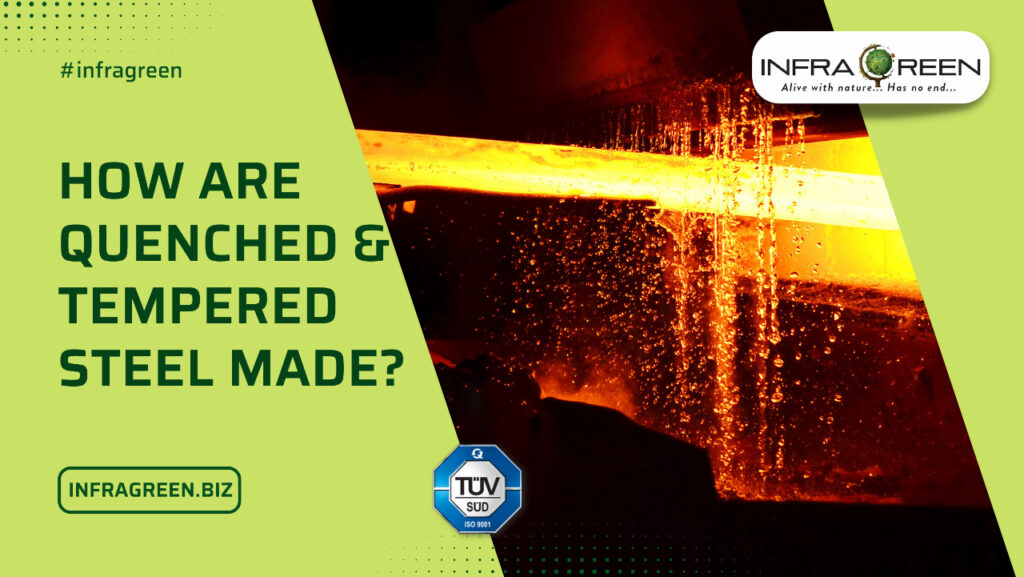Tempered and quenched steel is with the qualities of abrasion resistance and is strong with high fabrication and mechanical properties, to increase the strength and hardness of steel, both sheets of steel are processed like tempering and quenching.
Quenching is the process where the immediate cooling process follows the comprised steel heating by water or oil and forced air or nitrogen gases inert. The process like heating temperature, cooling speed, and cooling method in quenched are controlled and monitored.
Steps:
The primary purpose of these processes is to
- Tempering is the process in steel to achieve greater ductility and toughness to decrease the hardness of the steel,
- For the tempering, the steel has to be heated to a certain temperature and cooled with still air with a particular cooling rate.
- Mechanical and hardness properties of the steel are desired based on the parameters such as time and heating temperature.
- After the heading process, the steel becomes more brittle and less ductile, without the hardness compromising.
Features of the quenched and tempered steels:
- When the quenched steel is tempered it becomes less brittle with more ductile, without any change in the hardness of the steel.
- For the quenched and tempered steel, the greater resistance to abrasion and wear is referred to as the toughness factor.
Grade In quenched and Tempered Steel:
- Grade 80 steel: These grades are higher in hardness and abrasion-resistant with the feature of a certain carbon percentage for weldings. Welding can be done with grade 80 steel by itself as well as other grade steel.
- Grade 400 Steel: It has characteristics of high hardness with abrasion resistance which can be successfully cold formed and made giving high strength to the steel.
- Grade 500 Steel: Their steel is higher in hardness and abrasion resistance with medium carbon, offering a long shelf life for sliding applications like cutting edges, dump truck wear lines, and ground-engaging tools.
Uses of Quenched & Tempered Steel:
- They have used n plants, equipment, and machinery for greater abrasion resistance and higher strength.
- The quenched and tempered steel are used in storage tanks, bridges, and high-rise buildings.
List of Application Quenched & Tempered Steel Used:
- Deflector Plates.
- Storage Tanks.
- Excavator and loader buckets.
- Gear Wheels.
- Low Loader.
- Cutting edges.
- Chutes.
- Earthmoving buckets.
Advantages of Quenched and Tempered Steel:
- The process makes the steel harden and strengthen the metal to have a more robust final product to give high yield strength.
- Tempered steel is usually tougher than regular steel and can withstand a lot of environmental stress without being damaged.
- This ductile nature makes it perfect to be used in place where metal has to be shaped without breaking it.
Going through the article will have a clear understanding of how quenched and tempered steel are used in the construction and other operations of machines. Contact InfraGreen to deliver the required quenched and tempered steel for the construction of the project and also available in different grades.

